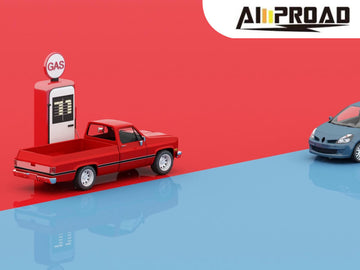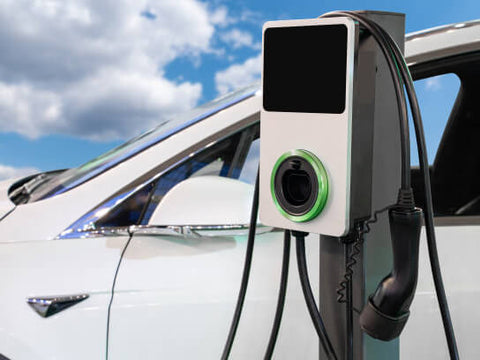
Imagine a world where filling up your car doesn't involve exhaust fumes or frantic searches for gas stations. For electric vehicle (EV) owners, this is their reality, with the J1772 charger as their trusted companion. But what exactly is the J1772 charger, and how does it power your electric journey? Get ready for an exploration of the J1772 charging universe, its seamless integration with EVs, and how it stacks up against other charging options. Join us on this electrifying ride as we unravel the mysteries of J1772 charging, paving the way for effortless and eco-friendly travels in the realm of electric vehicles.
What is the J1772 Charger?
For electric vehicle (EV) owners throughout North America, except for those driving Teslas with their unique connector, the J1772 charger serves as a universal translator of sorts. Developed by the Society of Automotive Engineers (SAE), this standard ensures seamless charging compatibility at the majority of public and private stations equipped with Level 1 or EVSE Level 2 charging capabilities (we'll delve into those levels shortly).
Imagine possessing a single plug that effortlessly fits into most power outlets – offering convenience and stress-free charging experiences. That's precisely what the J1772 charger provides for EV owners. With its widespread adoption and compatibility, it serves as a reassuring symbol of the expanding infrastructure supporting electric mobility across the continent.
Transitioning away from traditional gas stations to embrace the electric future has never been more enticing, thanks to the versatility and accessibility offered by the J1772 charger. It eliminates the hassle of searching for specific charging stations or adapters, empowering EV owners to charge up with ease wherever they go. Plus, with the increasing availability of Level 2 charging stations in public spaces, workplaces, and residential areas, the J1772 charger ensures that electric mobility is within reach for everyone.
So, the J1772 charger stands as a beacon of convenience and compatibility in the world of electric vehicle charging. Its widespread adoption and standardized design make it a trusted ally for EV owners, offering seamless charging experiences wherever their electric journeys take them. As we continue to witness the rapid growth of electric mobility infrastructure, the J1772 charger remains a cornerstone of accessibility and convenience, driving us toward a cleaner and more sustainable transportation future.
Does Your EV Speak J1772?
Your EV's compatibility with the J1772 standard is a testament to its widespread acceptance and adoption in the electric vehicle community. Nearly all EVs sold in North America, with the exception of Tesla models, feature a port designed to accommodate the SAE J1772 connector. This universality ensures that regardless of your vehicle's make or model, you can count on the J1772 charger to provide seamless and reliable charging experiences.
Now, let's dive a little deeper into the technical side of things. The J1772 connector boasts a unique five-pin design, each serving a specific function in the charging process. While it may sound complex, fear not – understanding its inner workings doesn't require a degree in electrical engineering. These pins facilitate communication between your EV and the charging station, enabling crucial functions such as authentication, safety checks, and monitoring of charging progress. This communication ensures that electricity flows smoothly and safely from the charging station to your vehicle's battery, optimizing charging efficiency and protecting both your EV and the charging infrastructure.
How Does J1772 Charging Work?
Imagine this: You pull up to your driveway, plug the J1772 connector into your car's charging port, and voila! Your EV starts juicing up. But what's happening behind the scenes? Here's a simplified breakdown:
- The Connection: You plug the J1772 connector into your car's designated charging port.
- Handshake Time: The car and the charger have a quick chat (well, an electronic conversation) to determine the maximum amount of current your car can handle. This ensures safe and efficient charging.
- Power Delivery: Once they agree on the current limit, the charger starts sending AC (Alternating Current) power to your car.
- The Inside Job: Your car's onboard charger takes this incoming AC power and converts it into DC (Direct Current) – the kind of electricity your battery craves.
- Important Note: The J1772 itself doesn't directly charge the battery. It acts as a conductor, delivering AC power that your car's internal system converts for battery use.
- Speed Demons: J1772 Chargers and the Race to Full Charge
Now, let's talk about the speed factor. J1772 offers two charging levels: Level 1 and Level 2. Here's the lowdown:
- Level 1: This level uses a standard 120V household outlet, similar to what you use for your toaster or phone charger. It's convenient, but slower, providing a charging rate of around 1.4 kW. Think of it as a slow and steady trickle charge.
- Level 2: This level ups the game by utilizing a 240V outlet, similar to your dryer or oven. This translates to a significant boost in charging speed, reaching a maximum of 19.2 kW. Now we're talking! With Level 2, you can expect a much faster top-up for your EV.
However, it's important to remember that J1772 isn't the absolute fastest home charging option. For those situations where you need a lightning-quick charge, Level 3 DC fast chargers, typically found at public stations, can deliver superhero-like power, reaching up to 350 kW. But these require specialized equipment and are not suitable for home installations.
Here's another factor to consider: The speed of your charge isn't just about the J1772 charger itself. It's a team effort!
- Charger Type: As mentioned before, Level 2 charges significantly faster than Level 1.
- Car's Onboard Charger: Just like your computer has a processing speed, your car's onboard charger also has a limit on how much power it can handle.
- Outlet Circuit: Make sure your home's electrical circuit can handle the increased power demands of Level 2 charging. It might require an upgrade from a qualified electrician.
- J1772: Speedy but Not the Speediest - Finding the Right Balance
So, where does J1772 stand in the charging speed race? J1772 offers a fantastic balance between speed, convenience, and affordability for home charging. While it may not be the absolute fastest home EV charger option, it provides a practical and efficient solution for most EV owners. Need a quick top-up overnight? Level 2 J1772 charging has you covered. For those rare occasions where you need a super-fast charge, public Level 3 DC fast charging stations are available.
Are There Fast J1772 Chargers for Home EV charging?
Thinking about ditching gas stations and going electric? That's fantastic! But a common question for new EV owners is: can I get fast charging at home? The answer depends on what you mean by "fast."
J1772: Your Home Charging Hero
The J1772 connector is the go-to charging standard for most EVs in North America (except Tesla). It's kind of like a universal translator for electric vehicles, allowing you to plug into most public and private charging stations. But J1772 offers two charging levels for home use: Level 1 and Level 2 charging.
Level 1: This level plugs into a standard 120-volt outlet, similar to what you use for your phone charger. It's convenient, but slow, providing a trickle charge of around 1.4 kW. Think of it like topping off your phone overnight – it gets the job done, but it takes a while.
Level 2: This level is where things get interesting. It utilizes a 240-volt outlet, similar to your dryer or oven. This translates to a significant boost in speed, reaching a maximum of 19.2 kW. Now we're talking! With Level 2, you can expect a much faster charge for your EV, adding many miles in a couple of hours.
Fast Compared to What?
So, is a Level 2 J1772 charger "fast"? Compared to a regular outlet, absolutely! But compared to public DC fast chargers, which can deliver hundreds of kilowatts in minutes, Level 2 is slower.
Here's the key takeaway: J1772 Level 2 charging is a great option for overnight charging or topping up your EV when you get home. It's convenient, efficient, and perfect for your daily driving needs. However, if you need a quick charge before a long trip, a public DC fast charger might be a better option.
If you're looking for a J1772 charger that offers both Level 1 and Level 2 charging options, the Amproad iFlow P9 is a great choice. This versatile charger features an adjustable amperage output, allowing you to switch between 10 amps (perfect for a standard outlet) and 40 amps (ideal for a 240-volt outlet) depending on your needs. It also boasts a compact design and long cable, making it a convenient option for home or on-the-go charging. Remember, while the Amproad iFlow P9 provides flexibility for different situations, the fastest charging will always come from a dedicated Level 2 setup at home.
In closing, the J1772 charger is a game-changer for EV owners in North America (except Tesla). It offers a user-friendly, standardized charging solution for home and public stations. While not the absolute fastest option, J1772 provides a perfect balance between speed, convenience, and affordability for everyday EV charging needs. So, ditch the gas station woes and embrace the world of J1772 charging – your EV and your wallet will thank you!




